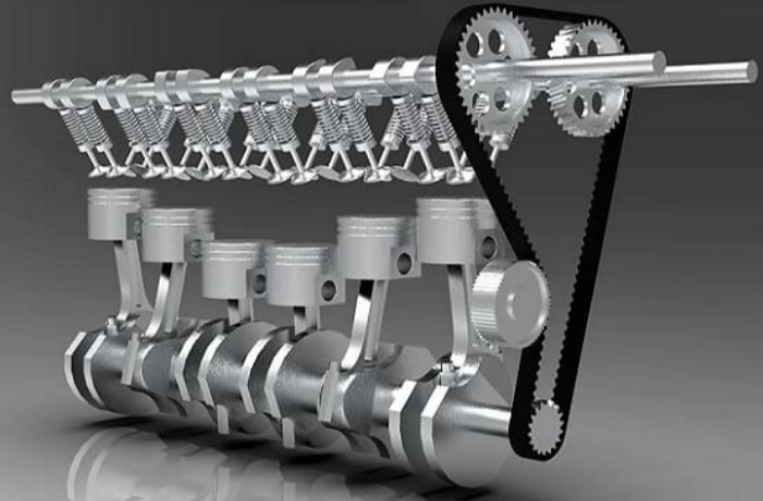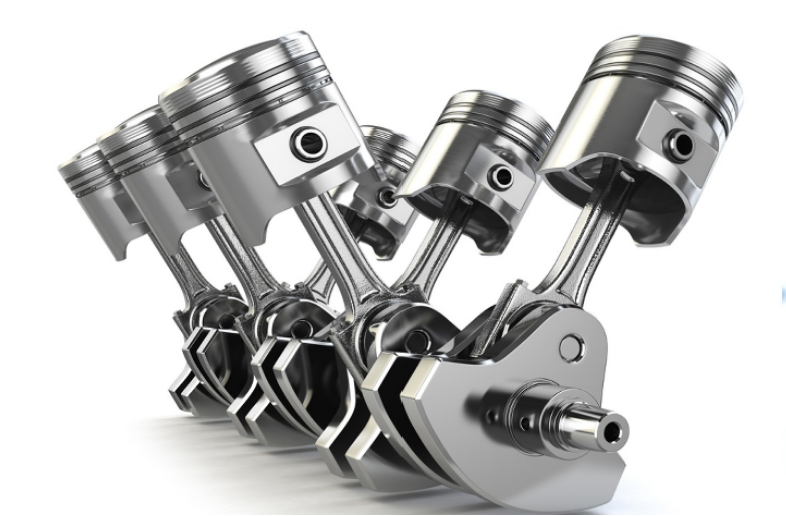Inline and V engines are very popular configurations among cars and even in multiple cylinder motorcycles. Engine configurations have different names, and those names are based on the design of the engine, particularly with respect to configuration of the engine’s cylinders, and the pistons inside those cylinders.
What are Inline Engines?

The straight or inline engine is an internal combustion engine with all cylinders aligned in one row and having no offset. The term “inline” refers to the configuration of the cylinders in the engine block. In an inline engine, the cylinders are positioned in a straight line and can be configured as an inline 2, 3, 4, 5, 6, or 8 cylinder engine. Manufacturers prefer to call four-cylinder variants “inline-four engines,” while engines featuring six or eight cylinders get called “straight” engines.
Inline engines are used in several applications, including aeronautics, and are cheaper to produce than the more complicated, but ever-popular, V-engines, or the compact horizontally opposed engines.
What are V Engines?

AV engine, sometimes called aVee engine, is a common configuration for internal combustion engines. It consists of two cylinder banks—usually with the same number of cylinders in each bank—connected to a common crankshaft. These cylinder banks are arranged at an angle to each other, so that the banks form a “V” shape when viewed from the front of the engine. The proponents of the V engine design often cite its generally shorter length, height and weight as reasons for its allure.
The V engines are found having a shorter length as compared to any other engines and specifically compared to inline engines whereas the trade-off is of a larger width. The most common layout of an automobile engine is a V6, V8 or V12 engine which have six, eight or twelve cylinders respectively.
The V The V engine consists of two banks, or rows, of cylinders that attach to a single crankshaft. Typically the cylinders are situated at a 60- or 90-degree angle. The banks in a V-6 are usually 60 or 90 degrees, and the banks of a V-8 engine usually lie in a 90-degree angle. consists of two banks, or rows, of cylinders that attach to a single crankshaft. Typically the cylinders are situated at a 60- or 90-degree angle. The banks in a V-6 are usually 60 or 90 degrees, and the banks of a V-8 engine usually lie in a 90-degree angle.
Inline vs V Engines: Key Differences
| Points of Comparison | Inline Engines | Engines |
| Resistance to Vibrations | Inline engines aren’t resistant and durable towards vibrations. | V engines can perform exceptionally well during vibrations. |
| Number Of Cylinders | It has less number of cylinders comparatively. | It has a larger number of cylinders. |
| Dimensions | Inline engines have a long structure. | V engines have a width dominant structure. |
| Alignment Of Cylinders | The cylinders are perfectly aligned in a straight row. | The cylinders are aligned at an angle that represents the v shape. |
| Another name | They are also called straight engines. | They are also called inverted engines. |
Advantages of Inline and V engines
The appeal of the V engine design comes from its tendency to be lighter and shorter in height and length than an inline layout of the same cylinder number and displacement. The short length of the V design allows automotive producers to shorten the length of the hood and use that space for other purposes. The V engine tends to permit higher torsional stresses and rotational speeds as a result of its strong short crankshaft.
The inline engine configuration, by contrast, is a much simpler design than the V, with a single bank containing all of the cylinders in a row. The larger block and distance between cylinders often cause the inline to have a smoother power delivery while producing more torque. Inline layouts are heavier and much longer than V-type engines, though, and they require more space in terms of length.
Key Takeaways
- The in-line engine has a single row of cylinders extending vertically upward from the crankcase and aligned with the crankshaft main bearings. The V type has two rows of cylinders, usually forming an angle of 60° or 90° between the two banks.
- A straight engine is considerably easier to build than an otherwise equivalent horizontally opposed or V engine, because both the cylinder bank and crankshaft can be milled from a single metal casting, and it requires fewer cylinder heads and camshafts.
- A V engine, also known as a vee engine, is a common type of internal combustion engine. It is characterized by the “V” shape that the cylinders make when viewed from the front of the engine, perpendicular to the axis of the crankshaft.
- In-line engines are also smaller in overall physical dimensions than designs such as the radial, and can be mounted in any direction.
- Straight configurations are simpler than their V-shaped counterparts.
- Compared with an equivalent inline engine (the most common configuration for engines with less than six cylinders), a V engine has a shorter length but is wider.
- The crankpins on a V engine are usually shared by two cylinders from opposing banks, with an offset between the two cylinders.
- To sum up the inline vs V engine comparison, an inline engine is usually quieter, smoother and churns relatively more power for a similar number of cylinders.